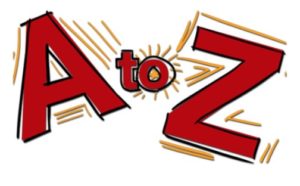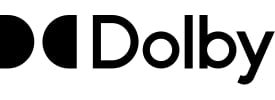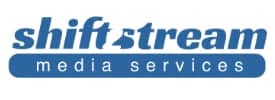- About
- Members
- Sponsors
- Subcommittees
- Technical Documents
- News
- Events
- Spotlight ATSC 3.0
- Contact Us
- Member Login
- Member Meetings
- Advanced Search
Search Site
Member Links
- About
- Members
- Sponsors
- Subcommittees
- Technical Documents
- News
- Events
- Spotlight ATSC 3.0
- Contact Us
- Member Login
- Member Meetings
- Advanced Search
ALPHABET SOUP ATSC: from A to Z
Posted on January 16, 2019 in ATSC News
 Those intimately involved in the ATSC standards process are familiar with the multitude of acronyms and terms that television engineers deal with every day. For those of us without engineering degrees (and even as a refresher for you technologists out there) here’s “ATSC from A to Z” – more than 400 acronyms and 240 terms and descriptions used in ATSC standards and recommended practices:
Those intimately involved in the ATSC standards process are familiar with the multitude of acronyms and terms that television engineers deal with every day. For those of us without engineering degrees (and even as a refresher for you technologists out there) here’s “ATSC from A to Z” – more than 400 acronyms and 240 terms and descriptions used in ATSC standards and recommended practices:
Acronym Definition
A
A/D Analog to Digital
A/V Audio/Video
ABNF Augmented Backus-Naur Form
ACATS Advisory Committee on Advanced Television Service
ACE Active Constellation Extension
ACI Adjacent Channel Interference
ACK Acknowledgement
Ad-ID Format identifier for identifying advertising assets
AEA Advanced Emergency Alerting
AEAT Advanced Emergency Alert Table
AES Advanced Encryption Standard
AFD Active Format Description
AGC Automatic Gain Control
AGL Above Ground Level
ALC Asynchronous Layered Coding
AL-FEC Application Layer Forward Error Correction
ALP ATSC Link-Layer Protocol
ALPTP ALP Transport Protocol
AMC Adaptive Modulation and Coding
AMP Application Media Player
AP Additional Parity
APD Associated Procedure Description
API Application Programming Interface
ARQ Automatic Repeat-reQuest
ASL American Sign Language
ATSC Advanced Television Systems Committee
AWGN Additive White Gaussian Noise
B
BAT Broadcast Access Terminal
BBP Base Band Packet
BCH Bose, Chaudhuri, Hocquenghem
BCH (n, k, t) Bose-Chaudhuri-Hocquenghem Error Correction Code having an n-bit codeword with k information bits (and hence n-k parity check bits) that is able to correct up to t bit-errors in the information bits.
BCI Broadcast Control Information
BEB Binary Exponential Backoff
BER Bit Error Rate
BICM Bit-Interleaved and Coded Modulation
BIL Bit InterLeaver
BMFF Base Media File Format
BP Bandpass
bpcu bits per cell unit
BPPS Baseband Packetizer Packet Set
bps bits per second
BPSK Binary Phase Shift Keying
BRET Bootstrap Reference Emission Time
BS Bootstrap
BSID Broadcast Stream ID
bslbf bit stream, left-most bit first
BSR Baseband Sampling Rate
BTC Broadcast Test Center
BTS Broadcast Television Station
BXF Broadcast eXchange Format
C
C Center (audio channel)
C/I Carrier to Interference ratio
C/N Carrier-to-Noise ratio
CA Certificate Authority
CAP Common Alerting Protocol
CAZAC Constant Amplitude Zero Auto-Correlation
CC Closed Captions
CCI Co-Channel Interference
CCIR Consultative Committee on International Radio
CD ATSC 3.0 Companion Device
CDL Convolutional Delay Line
CDM Consumption Data Message
CDN Content Delivery Network
CDU Consumption Data Unit
CEA Consumer Electronics Association
CENC Common ENCryption
CFF Common File Format
CFO Center Frequency Offset
CID Context Identifier
CL Core Layer
Cod Code rate
CP Continual Pilot
CP Codepoint
CP Cyclic Prefix
C-POL Circular Polarization
CRC Cyclic Redundancy Check
CRI Clock Relation Information
CSRC Contributing Source Identifier
CSS Cascading Style Sheets
CSS Cascading Style Sheets
CTA Consumer Technology Association
CTC Convolutional Turbo Code
CTI Convolutional Time Interleaver
CVS Coded Video Sequence
CW Continuous Wave
D
D/A Digital to Analog
D/U Desired/Undesired ratio
DASH Dynamic Adaptive Streaming over HTTP
DASH-IF DASH Industry Forum
dB deciBel
dBµV dB above 1 µV
dBm deciBels referenced to 1 milliwatt
dBm dB above 1 mW
DC Direct Current
DDE Data Delivery Event
DECE Digital Entertainment Content Ecosystem
Demux Demultiplexer
DFT Discrete Fourier Transform
DMD Dynamic MetaData
DNS Domain Name System
DRC Dedicated Return Channel
DRC Dynamic Range Control
DRCT Dedicated Return Channel Table
DSBSS Direct Sequence Buried Spread Spectrum
DSCP Data Source Control Protocol
DSL Digital Subscriber Line
DSS Data Source Signaling
DSTP Data Source Transport Protocol
DTCP Digital Transmission Content Protection
DTV Digital Television, nominally ATSC 1.0
DUT Device Under Test
DWD Distribution Window Description
E
EA Emergency Alert
EAA Emergency Alert Application
EAM Emergency Alert Message
EAS Emergency Alert System
EBn Elementary Stream Buffer (nth instance)
EBU European Broadcast Union
ECC Error Correction Coding
ECDHE Elliptic Curve Diffie-Hellman Ephemeral key exchange
ECDSA Elliptic Curve Digital Signature Algorithm
EFDT Extended File Delivery Table
EHFR Efficient High Frame Rate
EIDR Entertainment Industry Data Registry
EL Enhanced Layer
eMBMS enhanced Multimedia Broadcast/Multicast Service
EMDF Extensible Metadata Delivery Format
EME W3C Encrypted Media Extensions
EMI Electromagnetic Interference
E-POL Elliptical Polarization
ERP Effective Radiated Power
ESG Electronic Service Guide
ESR5 Erroneous-Second Ratio
ëXû The greatest integer less than or equal to X
F
FBSR FeedBack Shift Register
FCC Federal Communications Commission
FDD File Delivery Description
FDM Frequency Division Multiplexing
FDT File Delivery Table
FEC Forward Error Correction
FET Field Effect Transistor
FFT Fast Fourier Transform
FI Frequency Interleaver
FIFO First-In-First-Out
FLUTE File Delivery over Unidirectional Transport
fps frames (or pictures) per second
G
Gbps Gigabits per second
GBR Guaranteed Bit Rate
GCM Galois Counter Method
GHz Gigahertz
GI Guard Interval
GNSS Global Navigation Satellite System
GoP Group of Pictures
GP Guard Period
GT Guard Time
GPS Global Positioning System
GUI Graphical User Interface
H
HAAT Height Above Average Terrain
HAGL Height Above Ground Level
HbbTV Hybrid Broadcast Broadband Television
HD High Definition
HDMI High-Definition Multimedia Interface
HDR High Dynamic Range
HD-SDI High Definition Serial Digital Interface
HDTV High-Definition Television
HELD HTML Entry pages Location Description
HEVC High Efficiency Video Coding
HFR High Frame Rate
HLG Hybrid Log-Gamma
HOA Higher Order Ambisonics
H-POL Horizontal Polarization
HRBM Hypothetical Receiver Buffer Model
HTI Hybrid Time Interleaver
HTML HyperText Markup Language
HTML5 Hyper Text Markup Language, rev 5
HTTP Hyper-Text Transport Protocol
HTTPS Secure Hyper Text Transfer Protocol
Hz Hertz
I
I/Q In-phase / Quadrature
IANA Internet Assigned Numbers Authority
ID Identifier
ID Identification
IDFT Inverse Discrete Fourier Transform
IDR Instantaneous Decoding Refresh
IEEE Institute of Electrical and Electronic Engineers
IERS International Earth Rotation and Reference Systems Service
IETF Internet Engineering Task Force
IF Interleaving Frame
IF Intermediate Frequency
IFFT Inverse Fast Fourier Transform
IGMP Internet Group Management Protocol
IMSC1 Internet Media Subtitles and Captions Version 1
IP Internet Protocol
IP3 Third-Order Intermodulation Products
IPF Immediate Play-out Frame
IPTV Internet Protocol Television
IR Infra-Red
IR Initialization and Refresh
IR-DYN IR Dynamic
IS Initialization Segment
ISO International Organization for Standardization
ISO BMFF ISO Base Media File Format
ISO/IEC International Organization for Standardization / International Electrotechnical Commission
ISOBMFF International Organization for Standardization Base Media File Format
ITI International Telecommunications Union
ITU-R International Telecommunication Union Radiocommunication Sector
ITU-T International Telecommunication Standardization Sector
IU Interleaving Unit
J
JSON JavaScript Object Notation
K
kHz kilohertz
kHz kilo Hertz
L
L Left (audio channel)
L1 Layer 1
LAN Local Area Network
LAPR Licensed-to-Average Power Ratio
LCT Layered Coding Transport
LDM Layered Division Multiplexing
LDPC Low-Density Parity Check
LED Light Emitting Diode
LF Left Front (audio channel)
LFE Low Frequency Effects (audio channel)
LFSR Linear Feedback Shift Register
LKFS Loudness, K-weighted, relative to Full Scale
LLS Low Level Signaling
LMT Layer Mapping Table
LMT Link Mapping Table
LPF Low Pass Filter
LR Left Rear (audio channel)
LS Left Side or Left Surround (audio channel)
LSB Least-Significant Bit
LTE Long Term Evolution
M
M&E Music and Effects
MA3 MMT ATSC 3.0 Signaling Message
MAC Media Access Control
MAE Metadata Audio Elements
MBMS Multimedia Broadcast/Multicast Service
Mbps Megabits per second
MDCoIP Media Device Control over IP
MDE Media Delivery Event
MHAS MPEG-H Audio Stream
mhm1 ISO Base Media File Format sample entry type for MPEG-H Audio Stream
MHz Megahertz
MIME Multipurpose Internet Mail Extensions
MIMO Multiple Input Multiple Output
MISO Multiple Input Single Output
MMT MPEG Multimedia Transport
MMTP MPEG Media Transport Protocol
Mod Modulation
MPD Media Presentation Description
MPEG Moving Pictures Experts Group
MPI Media Presentation Information
MPT MMT Package Table
MPU Media Processing Unit
MRC Maximum Retransmission Count
ms millisecond
MSB Most-Significant Bit
MSE W3C Media Source Extensions
µsec microsecond
MTU Maximum Transfer Unit
MTU Maximum Transmission Unit
Mux Multiplexer
MVPD Multichannel Video Programming Distributor
N
N/A Not Allowed
N/A Not Applicable
NACK Negative Acknowledgement
NAL Network Adaption Layer
NAL Network Abstraction Layer
NGA Next Generation Audio
NoA Number of Active (cells)
NoC Number of (useful) Carriers
NRT Non-Real Time
nsec nanosecond
NTP Network Time Protocol
NUC Non-Uniform Constellation
O
OAM Object Audio Metadata
OCSP Online Certificate Status Protocol
OFDM Orthogonal Frequency Division Multiplexing
OFDMA Orthogonal Frequency Division Multiple Access
OFI Optional Field Indicator
OMA Open Mobile Alliance
OMA BCAST Open Mobile Alliance Broadcast Mobile Services Enabler Suite
OSD On-Screen Display
OSI Open Systems Interconnection
OSN On Screen message Notification
OTA Over The Air
OTI Object Transmission Information
P
PAM Pulse Amplitude Modulation
PAPR Peak-to-Average Power Ratio
PAT MPEG-2 Program Association Table
PC Personal Computer
PCM Linear Pulse Code Modulation. In this document this is understood to be the uncompressed format for audio signals.
PD ATSC 3.0 Primary Device
PDU Protocol Data Unit
PER Packet Error Rate
PH Phase Hopping
PHY Physical Layer
PID Packet Identifier
PIP Picture-in-Picture
PLP Physical Layer Pipe
PLP-R Physical Layer Pipe for Return Channel
PN Pseudo-Noise
ppm parts per million
PQ Perceptual Quantization
PRACH Physical Random Access Channel
PRBS Pseudo Random Bit Sequence
Pre Preamble
PSIP Program and System Information Protocol
PT Payload Type
PTP Precision Time Protocol
PUSCH Physical Uplink Shared Channel
Q
QAM Quadrature Amplitude Modulation
QCI QoS Class Identifier
QoS Quality of Service
QP Quality Point
QPSK Quadrature Phase Shift Keying
R
R Right (audio channel)
RAP Random Access Point
RCS relative cyclic shift
RDT ROHC-U Description Table
RDT ROHC-U Description Table
RF Radio Frequency
RF Right Front (audio channel)
RFC Request For Comment (IETF standard)
RFU Reserved for Future Use
RMP Receiver Media Player
RMS Root Mean Square
RNTI Radio Network Temporary Identity
ROHC RObust Header Compression
ROHC-U Robust Header Compression UDP
ROUTE Real-time Object delivery over Unidirectional Transport
ROUTE-DASH Real-time Object delivery over Unidirectional Transport / Dynamic Adaptive Streaming over HTTP
RR Right Rear (audio channel)
RRM Reference Receiver Model
RRT Rating Region Table
RS Right Side or Right Surround (audio channel)
RSA A method for obtaining digital signatures and public-key cryptosystems (originally proposed by Rivest, Shamir, and Adelman).
RT Real Time
RTC Retransmission Count
RTP Real-time Transport Protocol
Rx Receiver
S
SAP Segment Access Point
SAP Secondary Audio Programming
SBS Subframe Boundary Symbol
SC-FDMA Single Carrier Frequency Division Multiple Access
SCG Standard Color Gamut
SCT Server Current Time
SD Standard Definition
SDO Standards Development Organization
SDR Standard Dynamic Range
SECP Standard for Efficient Cryptography Elliptic Curve Domain Parameters
SEI Supplemental Enhancement Information
SFN Single Frequency Network
SFR Standard Frame Rate
SG Service Guide
SGDD Service Guide Delivery Descriptor
SGDU Service Guide Delivery Unit
SHA Secure Hash Algorithm
SHVC Scalable High Efficiency Video Coding
SID Sub-stream Identifier
SIMO Single Input Multiple Output
SINR Signal to Interference plus Noise Ratio
SISO Single Input Single Output
SL-HDR1 Single Layer High Dynamic Range part 1
SLS Service Layer Signaling
SLT Service List Table
SMPTE Society of Motion Picture and Television Engineers
SN Sequence Number
SNR Signal-to-Noise Ratio
SP Scattered Pilot
SPLP Single Physical Layer Pipe
SPS Sequence Parameter Set
SSDP Simple Service Discovery Protocol
SSM Source-Specific Multicast
SSM Service Signaling Manager
SSRC Synchronization Source Identifier
STL Studio-to-Transmitter Link
STLTP Studio–to-Transmitter Link Tunneling Protocol
S-TSID Service-based Transport Session Instance Description
T
TAI International Atomic Time
TAI Time Atomic International
TAI International Atomic Time
TASO Television Allocation Study Organization
TB Transport Block
TBI Twisted Block Interleaver
TBn Transport Buffer (nth instance)
tcimsbf two’s complement integer, msb first
TCP Transmission Control Protocol
TDCFS Time Diversity Code Filter Set
TDCFS Transmit Diversity Code Filter Set
TDM Time Division Multiplexing
TG-3 Technology Group 3
TI Time Interleaver
TI Time Interval
TLS Transport Layer Security
T-MDE Transport Media Delivery Event
TOA Threshold of Audibility
TOC Table of Contents
TOI Transport Object Identifier
TOL Transport Object Length
TOV Threshold of Visibility
TPO Transmitter Power Output
TR Tone Reservation
T-RAP Transport-Random Access Point
TS Transport Stream
TSI Transport Session Identifier
TT Timed Text
TTA Telecommunication Technology Association
TTML Timed Text Markup Language
TV Television
TUID Temporary User ID
Tx Transmitter
TxID Transmitter Identification
U
U/L Uplink
UDP User Datagram Protocol
UHD Ultra High Definition
UHDTV Ultra High Definition Television
UHF Ultra High Frequency
UI User Interface
uimsbf unsigned integer, most significant bit first
UL-MAP Uplink Resource MAP
UML Unified Modeling Language
URCR Usage Reporting-Capable Receiver
URI Uniform Resource Identifier
URL Uniform Resource Locator
URN Uniform Resource Name
US United States
USB Universal Serial Bus
USBD User Service Bundle Description
USBD/USD User Service Bundle Description / User Service Description
UTC Universal Coordinated Time
UUID Universally Unique Identifier
V
VDS Video Description Service
VHF Very High Frequency
VP1 The audio watermarking technology specified in A/334, “ATSC Standard: Audio Watermark Emission”
V-POL Vertical Polarization
VPS Video Parameter Set
VSWR Voltage Standing Wave Ratio
W3C World Wide Web Consortium
W
W3C World Wide Web Consortium
WAN Wide Area Network
WCG Wide Color Gamut
X
XLink XML Linking Language
XML eXtensible Markup Language
XOR eXclusive OR
XSL eXtensible Stylesheet Language
Y
YAATE You’re almost at the end
Z
ZC Zadoff-Chu
#
µs microsecond
µsec microsecond
16K 16384 point FFT size
16QAM 16-ary Quadrature Amplitude Modulation
2D Two dimensional
32K 32768 point FFT size
3D Three dimensional
3GPP 3rd Generation Partnership Program
8K 8192 point FFT size
|
Term |
Definition |
|
|
|
|
Active Area |
The portion of the video picture area that is being utilized for program content. Also referred to in CTA-CEB16 as the useful image inside the video frame. Active area excludes letterbox bars and pillar box bars. |
|
Adaptation Set |
A set of interchangeable encoded versions of one or several media content components |
|
Additional Header |
An Additional Header is part of the ALP packet header. The presence of an Additional Header depends on the specific fields of the Base Header. |
|
Additional View |
Stereoscopic 3D video component using equivalent or lower resolution compared to the reference view video. The view can be provided together with the reference view to create an asymmetric 3D video. (E.g. reference view: UHD resolution, additional view: HD resolution). |
|
Advanced Emergency Alert |
Provides an emergency notification mechanism in ATSC 3.0 that is capable of forwarding a broad range of emergency data. |
|
Alternative Presentation |
A Presentation that supports the personalized audio use-case by providing alternative object properties to be used in combination with common object essences. |
|
a-millisecond |
A time interval approximately equal to one millisecond derived from a binary count of nanoseconds and actually equaling 220 nanoseconds, which represents 1,048,576 nanoseconds (i.e., having a Period of 1.048576 milliseconds). |
|
Analyzed Media Duration |
The shortest Period between times at which data segment boundaries in all data Streams on the inputs of a Scheduler align. Data segment boundaries are indicated to the Scheduler by markers carried in the headers of the structures transporting data to the Scheduler. |
|
App |
Application. |
|
App-Based Feature |
Service component consisting of an application, optional files to be used by the application, and optional notifications directing the application to take particular actions at particular times. |
|
App-Based Service |
Service consisting entirely of app-based features, which provide the user interface for the service. |
|
Application |
A.) A collection of documents constituting a self-contained enhanced or interactive service. The documents of an application can include HTML, JavaScript, CSS, XML and multimedia files. An application can access other data that are not part of the application itself. An Application is a special case of a locally cached content item and can be delivered via broadcast or broadband. B.) A downloaded collection of interrelated documents intended to run in the application environment specified in the A/344, “Interactive Content” and perform one or more functions, such as providing interactivity or targeted ad insertion. The documents of an application can include (but are not limited to) HTML, JavaScript, CSS, XML and multimedia files. An application can access other data that are not part of the application itself. |
|
Application Context Cache |
The Application Context Cache is a conceptual storage area where information from the broadcast is collected for retrieval through the Receiver Web Server. This document refers to the Application Context Cache as if it were implemented as actual storage though this is for convenience only. An Application Context Cache corresponds to the Application Context Identifier associated with each Broadcaster Application. Files delivered over ROUTE contain attributes that determine which Application Context Cache they will be associated with. |
|
Application Context Identifier |
An Application Context Identifier is a unique URI that determines which resources are provided to an associated Broadcaster Application by the Receiver. Resources may be associated with multiple Application Context Identifiers but a Broadcaster Application is only associated with a single Application Context Identifier. Details of the Application Context Identifier syntax are specified in the HELD. |
|
Asset |
Any multimedia data entity that is associated with a unique identifier and that is used for building a multimedia presentation. |
|
ATSC 3.0 Bootstrap |
The ATSC 3.0 Bootstrap provides a universal entry point into a broadcast waveform. |
|
ATSC 3.0 Server |
Any IP-connected device that provides content or other service to an ATSC 3.0 client, and that complies with the normative requirements of this standard. |
|
ATSC Physical Layer Time (clock) |
The ATSC Physical Layer Time is the time-scale described by the emitted ATSC Physical Layer Time samples, and corresponds exactly in rate with International Atomic Time (TAI). |
|
ATSC Physical Layer Time (sample) |
A sample time for ATSC Physical Layer Time is transmitted in the preamble. This data indicates the moment when the start of the first symbol of the immediately preceding bootstrap was emitted. |
|
Audio Element |
The smallest addressable unit of an audio Program. |
|
Audio Presentation |
Has the meaning given in the ATSC A/342 Audio, Part 1: Common Elements. Also referred to as a Preselection (DASH-IF), a Presentation (AC-4), or a Preset (MPEG-H). |
|
Audio Program Component |
Logical group of one or more Audio Elements that is used to define an audio Presentation, e.g., complete main, music & effects, dialog, etc. |
|
Audio Signal |
A.) Has the meaning given in the ATSC A/342 Audio, Part 1: Common Elements. B.) Has the meaning given in the “ATSC Standard: Audio Common Elements (A/342 Part 1)”. |
|
Audio Watermark |
Data which is embedded in audio essence in such a way that it can be extracted (i.e., read) by an appropriately designed extractor. |
|
Author Signature |
A signature encoded in a specified form that is generated by the author of the application, which is the entity or entities whom claim authorship over the application content. |
|
Base Field |
The first portion of a Baseband Packet Header. |
|
Base Header |
A Base Header is part of the ALP packet header. A Base Header is always included in the header of an ALP packet and the first part of an ALP packet. |
|
Base URI |
The Base URI specifies the initial portion of a URL used by the Broadcaster Application to access files within the Application Context Cache. The Base URL is prepended to the relative URI path of a file to obtain the full URL of the file within the Application Context Cache. The Base URI is uniquely generated by the Receiver based on the Application Context Identifier defined for the Broadcaster Application. |
|
Baseband Packet |
A set of Kpayload bits which form the input to a FEC encoding process. There is one Baseband Packet per FEC Frame. |
|
Baseband Packet Header |
The header portion of a Baseband Packet.
|
|
Baseband Packetizer |
Functional block that creates Baseband Packets.
|
|
BAT |
An ATSC 3.0 receiver with a DRC terminal module in it, or equivalently a DRC-enabled ATSC 3.0 receiver.
|
|
Block Interleaver |
An interleaver where the input data is written along the rows of a memory configured as a matrix, and read out along the columns. |
|
Bootstrap |
A defined sequence of symbols that introduces each Physical Layer frame and provides a universal entry point into a digital Transmission signal. Each Bootstrap carries a value that serves as an indicator of the format of an immediately following Preamble symbol. |
|
Bootstrap Reference Emission Time |
A time value indicating the instant at which the leading edge of the first symbol of a Bootstrap is to be emitted from the transmitting antenna(s), absent any timing offsets of individual Transmitter(s) in a Network. |
|
Bootstrap Signaling (Information) |
Synonymous with Low Level Signaling (LLS) information implemented by the Service List Table (SLT) in support of rapid RF channel scanning and service acquisition by the receiver through discovery of Service Layer Signaling (SLS) information. |
|
Broadcast Gateway |
A Broadcast Gateway converts source file objects, for example media, system information, and other opaque files, into SFN baseband description for distribution to Transmitters. |
|
Broadcast Stream |
The abstraction for an RF Channel which is defined in terms of a carrier frequency centered within a specified bandwidth. |
|
Broadcast Stream ID |
Identifier of a broadcast stream, as defined in Section 6.3.2 of A/331.
|
|
Broadcast Stream ID (BSID) |
A 16-bit value that identifies the aggregate contents of a broadcast signal. Each transmitted signal that is unique (has content that is different from another signal) has a unique BSID; e.g., a signal translated onto a different frequency has the same BSID. |
|
Broadcaster Application |
A Broadcaster Application is used herein to refer to the functionality embodied in a collection of files comprised of an HTML5 document, known as the Entry Page and other HTML5, CSS, JavaScript, image and multimedia resources referenced directly or indirectly by that document, all provided by a broadcaster in an ATSC 3.0 service. The Broadcaster Application refers to the client-side functionality of the broader Web Application that provides the interactive service. The distinction is made because the broadcaster only transmits the client-side documents and code. The server-side of this broader Web Application is implemented by an ATSC 3.0 receiver and has a standardized API for all applications. No server-side application code can be supplied by the broadcaster. The broadcaster may provide Web-based documents and code that work in conjunction with the Broadcaster Application over broadband making the Broadcaster Application a true Web Application. The collection of files making up the Broadcaster Application can be delivered over the web in a standard way or can be delivered over broadcast as packages via the ROUTE protocol. |
|
BTS |
An ATSC 3.0 transmitter with a DRC base station module in it, or equivalently a DRC-enabled ATSC 3.0 transmitter.
|
|
Byte-Range-based File Repair |
The method of file repair whereby in the event of incomplete file reception over broadcast delivery, the receiver, as the file repair client, calculates the byte range(s) corresponding to the missing source symbols, and uses HTTP partial GET (or nominal HTTP GET) to retrieve that data from the repair server. The repair server, as a conventional HTTP server, is AL-FEC unaware, and stores the file object as the resource to be returned in part or in whole according to the client request. |
|
Cell |
A.) One set of encoded I/Q components in a constellation. B.) A complete transmission of an independently recoverable packet of data in an audio watermark. C.) Has the meaning given in the ATSC A/334 Audio Watermark Emission specification. |
|
|
|
|
Cell Interleaver |
An interleaver operating at the cell level. |
|
Center Frequency |
The point in the spectrum of a Physical Layer signal at which equal numbers of carriers are positioned both higher and lower in the spectrum. |
|
Codec |
A system consisting of an encoder and decoder |
|
Coded Video Sequence |
Sequence parameter sets which apply to a series of consecutive coded video pictures. |
|
Combined PLP |
A PLP after processing by the LDM injection block. |
|
Concatenated Code |
A code having an Inner Code followed by an Outer Code. |
|
Constellation |
A set of encoded (I component/Q component) points in the I/Q plane. |
|
Content fragment |
Portion of Service Announcement that describes ATSC program or content item, corresponding to Content fragment in OMA BCAST Service Guide model, with additions and constraints. |
|
Content item |
Set of one or more files which a service provider intends to be treated as a single unit for presentation purposes. |
|
Context |
RFC 3095 describes Context, as used herein, in the following mnner: The context of the compressor is the state it uses to compress a header. The context of the decompressor is the state it uses to decompress a header. Either of these or the two in combination are usually referred to as “context,” when it is clear which is intended. The context contains relevant information from previous headers in the packet stream, such as static fields and possible reference values for compression and decompression. Moreover, additional information describing the packet stream is also part of the context, for example information about how the IP Identifier field changes and the typical inter-packet increase in sequence numbers or timestamps. |
|
Contribution Encoding |
An audio encoding format that is configured for the purpose of distributing broadcast audio within and among professional broadcast environments, where multiple stages of encoding and decoding are expected to be performed. |
|
Core Layer |
The first layer of a 2-layer LDM system. The only layer in a non-LDM system. |
|
Core PLP |
A PLP belonging to the Core Layer. |
|
DASH Client |
A DASH Client per the DASH-IF profile. |
|
DASH Media Presentation |
A DASH Media Presentation per the DASH-IF profile.
|
|
DASH Media Presentation Description (MPD) |
A DASH MPD per the DASH-IF profile.
|
|
DASH Media Segment |
A DASH Media Segment per the DASH-IF profile
|
|
DASH Period |
A DASH Period per the DASH-IF profile. |
|
DASH Representation |
A DASH Representation per the DASH-IF profile.
|
|
DASH Segment |
Refers to a DASH Initialization Segment or Media Segment per the DASH-IF profile. |
|
Data Consumer |
A device that receives a formatted stream of data and further processes and/or distributes it. |
|
Data Delivery Event (DDE) |
A Data Delivery Event (DDE) is the result of a block based MAC/PHY delivering relevant contents of a specific physical layer block to a specific ROUTE session at specific time. |
|
Data Payload Symbols |
Data and Subframe Boundary Symbols (i.e. non-Preamble symbols).
|
|
Data Producer |
A device or process that generates a formatted stream of data. |
|
Data Source |
An origination point for data to be transmitted as content by the Physical Layer. |
|
Data Source Signaling |
Information sent from a Data Source to downstream functions to identify specific characteristics of the content of certain packets within the data Stream to provide interlayer communications while avoiding layer violations in the system. Typically, Data Source Signaling information is carried in RTP headers in locations defined in this standard. |
|
|
|
|
Default Video |
For a Service that includes multiple video assets, indicates the video preferred by the service provider for selection in the absence of an action, instruction or configuration to make an alternate selection. |
|
Distributor Signature |
A signature encoded in a specified form that is generated by a distributor, which is a third party (e.g., the broadcaster) that is distributing the application on behalf of the author. |
|
DRC Downlink |
Downlink signaling and downlink data transmission of DRC-related information through the PLP for Return Channel (PLP-R).
|
|
DRC Uplink |
Uplink signaling and uplink data transmission of DRC through the Physical layer and MAC layer specifications defined in A/323.
|
|
Dynamic Event |
Has the meaning given in A/337. |
|
EA Service |
Service that delivers rich media resources that are referenced in an emergency alert CAP message. |
|
Earliest Time |
A time value that accompanies data sent as input to a Broadcast Gateway to indicate the first instant, as determined using TAI, at which the first byte of related data, including all wrappers and encapsulating protocols, may start emission on the Physical Layer. |
|
Embed |
The process whereby an audio signal is modified to include an audio watermark. |
|
|
|
|
Embedder |
A tool or process that is able to embed an audio watermark in an audio signal. |
|
Emission Coding |
An audio encoding format that is configured for the purpose of broadcast emission to receivers (viewers). |
|
Emission Wakeup Field |
The two Wakeup Bits in a Bootstrap when treated together as a field.
|
|
Enhanced Layer |
The second layer of a 2-layer LDM system. |
|
Enhanced PLP |
A PLP belonging to the Enhanced Layer. |
|
Entry Package |
The Entry Package contains one or more files that comprise the functionality of the Broadcaster Application. The Entry Package includes the Entry Page and perhaps additional supporting files include JavaScript, CSS, image files and other content. |
|
Entry Page |
A.) An initial HTML5 document referenced by application signaling that should be loaded first into the User Agent. It is included as a file within the Entry Package. B.) The Entry Page is the initial HTML5 document referenced by application signaling that should be loaded first into the User Agent. The Entry Page is one of the files in the Entry Package. |
|
ESG Service |
Service that delivers Electronic Service Guide (ESG) information. |
|
Event |
Timed notification to receiver software or to an application indicating that some action is to be taken |
|
Event Stream |
A.) Stream of events. B.) An Event Stream is a series of messages, either static, in DASH signaling, or dynamic, contained in defined messages within media segments. The events contained within the Event Stream can initiate interactive actions on the part of a Broadcaster Application. |
|
Exciter |
An element of a Transmitter comprising data processing and signal processing functions including at least framing, error correction coding, waveform generation, modulation, and up-conversion to the output RF channel frequency. |
|
|
|
|
Extended FDT Instance |
An instance of the FLUTE FDT that includes extensions. The Extended FDT may be transported as the EFDT element within the Srcflow element, or as an FLUTE FDT-Instance element in TOI=0. |
|
Extension Field |
The third portion of a Baseband Packet Header. |
|
Extension Header |
An Extension Header is part of the ALP packet header. The presence of an Extension Header depends on the specific fields of the Additional Header. |
|
Extractor |
A tool or process that is able to extract audio watermark packets from an audio signal. |
|
FEC Block |
A FEC Frame after mapping to cells. |
|
FEC Frame |
A single Baseband Packet with its associated FEC parity bits attached, having a total size of 64800 or 16200 bits (per FEC Frame). |
|
Filter Code |
An integer which represents a personalization description. Filter Codes are created by broadcasters according to broadcasters’ particular personalization categories, such as truck owner, sustaining member, or a zip code. Filter Codes are unique within the scope of an AppContextID described in A/344. Filter Codes may be associated with files. |
|
Fragment |
One part of a fragmented ISOBMFF file |
|
Frequency Interleaver |
An interleaver which takes cells and interleaves them over a particular symbol. |
|
|
|
|
Header |
A sequence of bits that is present at the start of a cell. |
|
High Dynamic Range |
A feature that allows representation of video levels with much higher luminance values than is possible with traditional video methods. |
|
(HTTP) File Repair |
HTTP transactions between the receiver and a network repair server, conducted over the broadband channel, which enables the receiver to recover partially delivered object(s). |
|
I(x) mod G(x) |
The remainder that results from the polynomial division of I(x) by G(x). |
|
I-Frame |
An independently decodable frame |
|
Initialization Segment |
Segment containing metadata that is necessary to present the media streams encapsulated in Media Segments. |
|
Inner Code |
One code of a Concatenated Code system. |
|
Interlaced HD |
A specific set of high definition video formats. |
|
Interleaver |
A device used to counteract the effect of burst errors. |
|
Interval Code |
A value that identifies the interval of content in which the VP1 payload value is embedded. |
|
Large Domain |
A division of the VP1 Payload wherein the interval field has a size of 25 bits, sufficient to support watermarking of approximately 1 year, 7 months of content. |
|
|
|
|
Latest Time |
A time value that accompanies data sent as input to a Broadcast Gateway to indicate the last instant, as determined using TAI, by which the last byte of related data, including all wrappers and encapsulating protocols, must complete emission on the Physical Layer. |
|
Layered Division Multiplexing |
A multiplexing scheme where multiple PLPs are combined in layers with a specific power ratio. |
|
Legacy SD |
A specific set of standard definition video formats. |
|
Linear Audio/Video Service |
Service consisting of one or more continuous video components, one or more continuous audio components, each associated with one or more of the video components, and one or more closed caption components, each associated with one or more of the audio components, all streamed in real time. May also contain app-based features. |
|
Linear Audio-Only Service |
Service consisting of one or more continuous audio components and one or more closed caption components, each associated with one or more of the audio components, all streamed in real time. May also contain app-based features. |
|
LLS (Low Level Signaling) |
Signaling information which supports rapid channel scans and bootstrapping of service acquisition by the receiver. |
|
Locally Cached Content Item |
A collection of one or more Locally Cached Files which are intended to be consumed as an integrated whole. A Locally Cached Content Item is typically not consumed or presented until the requisite Locally Cached Files have been fully received and cached. |
|
Long-term storage |
A location in memory used to store a recording of a program with the intention of playback at a later date and time. This memory is persistent through power cycles of the device. |
|
Major Channel Number |
Part of the identification of a service, as defined in Section 6.3.2 of A/331 as SLT.Service@majorChannelNo. The combination of major and minor channel number is unique within a broadcast area. I.e., a receiver of over-the-air broadcasts will never see two different services with the same major/minor channel number combination. |
|
Marked Audio |
Audio that has an audio watermark embedded in it. |
|
Media Delivery Event (MDE) |
A Media Delivery Event (MDE) is the arrival of a collection of bytes that is meaningful to the upper layers of the stack for example the media player and decoder(s). MDE data blocks have delivery deadlines. The grouping of bytes that is a RAP is a “Delivery” in ROUTE and the arrival of these bytes is an “Event” at an upper layer. |
|
Media Presentation |
Collection of essences that establishes a bounded or unbounded presentation of media content. |
|
Media Presentation Description |
Formalized description for a Media Presentation for the purpose of providing a streaming service.
|
|
Media Processing Unit |
Generic container for independently decodable timed or non-timed data that is media codec agnostic. |
|
Media Segment |
A.) A portion of a data Stream that is treated as a unit by a Scheduler for purposes of analysis and Transmission. B.) Segment that complies with media format in use and enables playback when combined with zero or preceding Segments and a Initialization Segment (if any). |
|
Minor Channel Number |
Part of the identification of a service, as defined in Section 6.3.2 of A/331 as SLT.Service@minorChannelNo. |
|
MMT Package |
Logical collection of media data, delivered using the MMT protocol. |
|
MMT Protocol |
Application layer transport protocol for delivering MMTP payload over IP networks. |
|
MMTP Packet |
Formatted unit of the media data to be delivered using the MMT protocol. |
|
ModCod |
A combination of modulation and code rate that together determine the robustness of the PLP and the size of the Baseband Packet. |
|
MP Table |
MMT Package Table containing information on MMT assets/content components. |
|
|
|
|
MPI message |
MMT signaling message containing an MPI Table. |
|
MPI Table |
MMT table containing presentation information. |
|
MPT message |
MMT signaling message containing an MP Table. |
|
Multicast |
(Verb) to send data across (e.g., an IPv4) network to many recipients simultaneously; (noun) a set of data sent across (e.g., an IPv4) network to many recipients simultaneously. |
|
Multiplex |
A group of services that are transmitted together over a Network. |
|
Network |
A group of Transmitters delivering the same Multiplex. |
|
Network Content Item |
A continuous component (e.g., an audio/video clip) or a collection of one or more files (e.g., a slide show or a set of inter-linked HTML pages) that is intended to be consumed as an integrated whole, and that is delivered on demand for immediate presentation. Network Content Items are delivered via broadband and are normally progressively presented prior to receiving the entire file(s). |
|
Network Layer Packet |
A Network Layer Packet is a source packet in the protocol of the data to be transported, e.g., an MPEG-2 Transport Stream packet or an Internet Protocol packet. |
|
Non-Uniform Constellation |
A constellation with a non-uniform spread of constellation points. |
|
Null Packet |
An MPEG-2 TS packet with PID equal to 0x1FFF. |
|
Optional Field |
The second portion of a Baseband Packet Header. |
|
Outer Code |
One code of a Concatenated Code system. |
|
Packet |
A.) A collection of data sent as a unit, including a header to identify and indicate other properties of the data, and a payload comprising the data actually to be sent, either having a fixed known length or having means to indicate either its length or its end. B.) Has the meaning given in the ATSC A/334 Audio Watermark Emission specification. |
|
Packet Set |
A group of packets carrying segments of a large data structure that has been segmented for the purpose of carriage across a transport connection that is not configured to carry the large data structure. |
|
Packetizer |
A process that treats a collection of data (e.g., a portion of a data Stream) by breaking it into segments and wrapping the segments in a header structure, thereby creating packets for Transmission / delivery. |
|
Paging |
The BTS pages for a single terminal in the broadcast network.
|
|
Parity |
A division of the Cell that carries the BCH code parity check bits. |
|
PCM |
Linear Pulse Code Modulation. In this document this is understood to be the uncompressed format for audio signals. |
|
Period |
A duration of time. |
|
Personalization |
A feature that provides consumers control over the listening experience |
|
Physical Layer |
A functional protocol that defines the framing, resource allocation, and waveforms of signals emitted for delivery of data and content to receivers. |
|
Physical Layer Pipe |
A structure specified to an allocated capacity and robustness that can be adjusted to broadcaster needs. |
|
PLP (Physical Layer Pipe) |
A portion of the RF channel which has certain modulation and coding parameters. |
|
|
|
|
Preamble |
A.) The portion of the frame that carries L1 signaling data for the frame. B.) The portion of a Physical Layer frame that carries L1 signaling data for the frame. |
|
Preamble Generator |
A function within a Broadcast Gateway that accepts instructions from a Scheduler, creates and formats Preamble Packets according to those instructions, and releases the Preamble Packets in the form of a Preamble Stream that can be multiplexed with other data Streams for delivery to the Transmitter(s) under control of the Broadcast Gateway. |
|
Preamble Packet |
A packet of data that provides a complete set of information necessary for Transmission following the Bootstrap of a Physical Layer frame to instruct receivers regarding the necessary receiver data processing to permit recovery of the data contained within the frame. The packet also serves to instruct Transmitters with respect to the configuration of the Physical Layer frame that is to be emitted so that the Exciter data processing for the frame can be properly configured. |
|
Preamble Parser |
A function within an Exciter that receives Preamble Streams, extracts from them Preamble Payload data, and stores the Preamble Payload data until the time for its emission as part of a broadcast signal. The Preamble Parser then makes the Preamble Payload data available to the Exciter control system for use in configuring the data- and waveform-processing of the Exciter, and outputs individual Preamble Packets at the correct times for their inclusion in the emission of the Physical Layer frames the configurations of which they define. |
|
Preamble Payload |
The L1 data carried in a Physical Layer frame to define the structure of the frame and to specify the modulation, coding, and other parameters used in delivery of the frame. |
|
Preamble Stream |
A data Stream carrying Preamble Packets, comparable to the data Streams carrying data for PLPs and for Timing and Management functionality, that can be multiplexed with other Streams and delivered as a combined data Stream that is tunneled through the STLTP. |
|
Presentation |
A set of one or more AC-4 Substreams intended to be decoded and presented to the user simultaneously. In the context of this document, the term Presentation and the term Audio Presentation as defined in Part 1 of A/341, refer to identical concepts. |
|
Primary Bit Stream |
The elementary stream that serves as the entry-point. It carries the default Presentation in a multistream Program |
|
Privileged Application |
An application that can override system controls, authorizations, or privileges.
|
|
Program |
A single content segment |
|
Progressive Video |
A specific set of formats.
|
|
Protocol Data Unit |
The protocol data unit encapsulated in the DRC Uplink MAC layer. The maximum size of a DRC uplink MAC PDU is limited to 2048 bytes.
|
|
Query Flag |
The value of the query_flag field in an instance of the VP1 Payload. |
|
Random Access |
User terminals try to access the system.
|
|
Random Access Point (RAP) |
A Random Access Point is the starting byte of a sequence of data that allows an applicable media client and decoder to start. |
|
Receiver |
The Receiver described in this document refers to an entity that implements the functions of the Reference Receiver Model. |
|
Receiver Web Server |
The Receiver Web Server is a conceptual component of a Receiver that provides a means for a User Agent to gain access to files delivered over ROUTE that conceptually reside in the Application Context Cache. |
|
Receiver WebSocket Server |
The Receiver WebSocket Server provides a means for a User Agent to gain access to information about the Receiver and control various features provided by the Receiver. |
|
Recovery File |
A file containing signaling data about the service being presented including URLs that can be used to access signaling information for supplementary signaling and content. |
|
Recovery File Server |
A server that provides Recovery Files to receivers.
|
|
Reference Receiver Model |
A conceptual receiver device that is capable of executing the APIs and behavior specified in this document. This document specifies normative attributes of the model, which are intended to inform actual receiver implementations. |
|
Reference View |
Stereoscopic 3D video component with the spatial resolution equal to or greater than the additional view. |
|
Repair Symbol |
A symbol containing information generated by the AL-FEC code which can be used to recover lost source symbols of the transport object. |
|
Representation |
A collection and encapsulation of one or more media streams in a delivery format and associated with descriptive metadata |
|
Reserved |
Set aside for future use by a Standard. |
|
Resource Block |
A resource block is composed of 3 resource tiles that are contiguous in frequency-time dimension or time-frequency dimension.
|
|
Resource Tile |
Basic unit in an uplink physical frame. One resource tile occupies 20 contiguous subcarriers in the frequency dimension and 2 contiguous symbols in the time dimension, which is equal to 40 cells. Among the cells in one resource tile, 8 of them are used for pilots and 32 are used for data transmission. Each resource tile has an index to represent it, which is numbered according to the position of the resource tile in the uplink frame.
|
|
Scalable/Layered Audio |
An audio system that uses hierarchical techniques to: (1) Provide increasing quality of service with improving reception conditions, and/or (2) Provide different levels of service quality as required by different device types or presentation environments. |
|
Schedule fragment |
Portion of Service Announcement that describes presentation scheduling of content in an ATSC service, corresponding to Schedule fragment in OMA BCAST Service Guide model, with additions and constraints as described in this document. |
|
Scheduler |
A Studio side-function that allocates physical capacity to data Streams based on instructions from the System Manager combined with the capabilities of the specific system. |
|
Segment |
Unit of data associated with an HTTP-URL and optionally a byte range that are specified by a MPD. |
|
Segment Index |
Compact index of the time range to byte range mapping within a Media Segment separately from the MPD. |
|
Server Code |
A value that identifies a server which acts as the starting point for acquisition of supplementary content. |
|
Service |
A collection of media components presented to the user in aggregate; components can be of multiple media types; a Service can be either continuous or intermittent; a Service can be Real Time or Non-Real Time; Real Time Service can consist of a sequence of TV programs. |
|
Service Announcement |
Service Announcement is information regarding the ATSC services and content available. |
|
Service fragment |
Portion of Service Announcement that describes ATSC service, corresponding to Service fragment in OMA BCAST Service Guide model, with additions and constraints. |
|
Service Guide |
Function of presenting Service Announcement. |
|
Signaling Server |
A server that provides access to the Service Layer Signaling (SLS), as specified in Section 7 of A/331. |
|
Single Frequency Network |
Multiple Transmitters in proximity to one another radiating the same waveform and sharing a frequency. |
|
SLS (Service Layer Signaling) |
Signaling which provides information for discovery and acquisition of ATSC 3.0 services and their content components. |
|
SLT (Service List Table) |
Table of signaling information which is used to build a basic service listing and provide bootstrap discovery of SLS. |
|
Small Domain |
A division of the VP1 Payload wherein the interval field has a size of 17 bits, sufficient to support watermarking of approximately 54 hours of content. |
|
Source Symbol |
A symbol containing information from the transport object. |
|
Spatial Scalable Coding |
A method of providing low and high spatial resolution versions of content through use of a base and an enhancement layer |
|
Staggercast |
A robustness feature that can be optionally added to audio components consisting of delivery of a redundant version of a main audio component, possibly coded with lower quality (lower bitrate, number of channels, etc.), and with a significant delay ahead of the audio with which it is associated. Receivers that support the Staggercast feature can switch to the Staggercast stream should main audio become unavailable. The delivery delay between Staggercast audio and main audio is chosen to be high enough to provide robustness thanks to sufficient time diversity between the two. |
|
Standard Frame Rate |
A picture frequency lower than or equal to 60 pictures per second.
|
|
STL Interface |
The STL Interface is the origin point for the Studio-to-Transmitter Link Tunneling Protocol (STLTP). |
|
Stream |
A sequential set of packets carrying data from a Data Source to one or more Data Consumers. |
|
Stream Access Point |
Position in a Representation enabling playback of a media stream to be started using only the information contained in Representation data starting from that position onwards (preceded by initializing data in the Initialization Segment, if any) |
|
S-TSID (Service-based Transport Session Instance Description) |
An SLS XML fragment which provides the overall session description information for transport session(s) which carry the content components of an ATSC 3.0 service.
|
|
Studio Interface |
The Studio Interface is the termination point for the ALP Transport Protocol (ALPTP) and/or the Data Source Transport Protocol (DSTP). |
|
Subsegment |
Unit within Media Segments that is indexed by a Segment Index. |
|
Substream |
A part of an AC-4 elementary stream that contains audio data and/or corresponding metadata. A Substream is referenced by one or more Presentations. |
|
Symbol |
A.) A unit of data processed by an FEC code; e.g., N bytes of data. A symbol is always considered as a unit—i.e., it is either completely received or completely lost. B.) The representation of a bit of binary information in the audio watermark. |
|
System Manager |
The System Manager is a conceptual subsystem outside the Transport and Physical Layers and responsible for coordinating the functions of at least those two layers and the static and quasi-static configurations of various system aspects, for example definition of PLPs or assignment of IP addresses and port numbers to Services. The System Manager does not manage real-time traffic directly. |
|
Systematic |
A property of a code in which the code word is composed of the original data in its sequential order followed by the parity data for the code word. |
|
TI Block |
An integer number of FEC Blocks. |
|
Time Interleaver |
An interleaver which takes cells and interleaves them over a particular time period. |
|
Time-shift-buffer |
A buffer of memory used to record a temporary, fixed duration of the program being presented for the purposes of skipping ahead, skipping back, pausing, or resuming playback of a broadcast. |
|
Timing and Management Data |
A collection of data sent from a Timing and Management Generator in a Broadcast Gateway to the Transmitter(s) under control of the Broadcast Gateway for purposes of controlling the emission times of Physical Layer frames, establishing various Transmitter configurations, and setting various Transmitter parameters, independent of the configurations of the frames and waveforms of the emitted signal itself. |
|
Timing and Management Generator |
A function within a Broadcast Gateway that accepts instructions from a Scheduler, creates and formats Timing and Management Data according to those instructions, and releases the Timing and Management Data in the form of a Timing and Management Stream that can be multiplexed with other data Streams for delivery to the Transmitter(s) under control of the Broadcast Gateway. |
|
Timing and Management Stream |
A data Stream carrying Timing and Management Data, comparable to the data Streams carrying data for PLPs and for Preambles, that can be multiplexed with other Streams and delivered as a combined data Stream that is tunneled through the STLTP. |
|
Track |
A collection of related samples in an ISO base media file. For media data, a Track corresponds to a sequence of images or sampled audio. |
|
Transcoding |
The process by which audio that is represented in one encoding format is converted into another encoding format. This is typically achieved by decoding the audio from the first encoding format to PCM audio, followed by encoding of the PCM audio into the destination format. |
|
Transmission |
The signal that is emitted by a Transmitter and the synchronized signal that is emitted by all Transmitters in a Network. |
|
Transmitter |
An individual emitter at a specific geographic location on a specific frequency. |
|
Transport Block |
The minimum channel coding block for uplink communications. The size of a transport block is determined by the number of allocated tiles for a user and the coding scheme. Referring to Table 5.5 of A/323, the maximum number of information bits transmitted by a transport block can be 96, 144, 192, 288, 384, 432, 576, or 864. When the size of a MAC PDU is less than or larger than this limitation, padding or segmentation, respectively, shall be used.
|
|
Transport Layer |
A functional protocol that defines the formatting of data that will be delivered to receivers after its recovery from the formatting required for its physical delivery by the Physical Layer. It provides logical communication between application processes running on different hosts within a layered architecture of protocols and other network components. |
|
Transport Media Delivery Event (T MDE) |
A Transport Media Delivery Event is a Media Delivery Event wrapped in IP/UDP/ROUTE.
|
|
Transport Random Access Point (T RAP) |
A Transport Random Access Point (T-RAP) is the first byte of a Random Access Point as expressed in IP/UDP/ROUTE transport.
|
|
Tunnel Packet |
A packet that carries in its payload the contents of one or more multiplexed packet Streams, including the corresponding headers and any other structural elements, i.e., a packet in the “outer” layer of a packet Tunneling system. |
|
Tunneled Data Stream |
A Stream of multiplexed Tunneled Packets carried within an STLTP encapsulation for ECC processing. |
|
Tunneled Packet |
A packet within a multiplexed group of packet Streams carried in a Tunnel Packet, i.e., a packet in the “inner” layer of a packet Tunneling system. |
|
Tunneling |
A process by which a group of parallel and independent packet Streams are carried within a single packet Stream so that they can be processed, transported, and otherwise treated as a single Stream entity. |
|
Tuple |
The combination of Internet Protocol (IP) addresses and port numbers. |
|
Twisted Block Interleaver |
An interleaver that performs intra-subframe interleaving by interleaving TI Blocks. |
|
|
|
|
USBD/USD (User Service Bundle Description / User Service Description) |
The XML-based SLS fragment which provides entry point information for the description and discovery of the technical details of an ATSC 3.0 service.
|
|
User Agent |
Software provided by the Receiver that retrieves and renders Web content. The User Agent interprets HTML5, CSS, and JavaScript, renders media, text, and graphics, and can create user interaction dialogs. |
|
VP1 |
The audio watermarking technology standardized in the ATSC A/334 Audio Watermark Emission specification.
|
|
VP1 Audio Watermark Segment |
A continuous interval of watermarked audio during which signaling information recovered via audio watermark Payloads is applicable.
|
|
VP1 Message Group |
A sequence of video frames, each carrying a vp1_message, each carrying identical data repeated for all successive video frames across at least a 1/6 second duration of content. |
|
VP1 Payload |
The specific arrangement of the 50-bit VP1 payload in domain_type, server_field, interval_field, and query_flag specified in the present document. |
|
VP1 Video Watermark Segment |
A continuous interval of time that contains watermarked video during which signaling information recovered via vp1_message ()s is applicable.
|
|
VP1 Watermark Segment |
A VP1 Video Watermark Segment or a VP1 Audio Watermark Segment.
|
|
Wakeup Alert |
The occurrence of an AEA message requesting the setting of a non-zero value for the Emission Wakeup Field. |
|
Wakeup Bits |
The bits in Bootstrap Symbols 1 and 2 that are used to indicate to receivers that there is high-priority emergency information included in the broadcast. |
|
Web Application |
A Web Application is a client/server program accessed via the web using URLs. The client-side software is executed by a User Agent. |
|
Wide Color Gamut |
A feature that allows representation of chrominance levels with much broader range than is possible with BT.709. |
Pop Quiz to follow.
Posted in ATSC News
News Categories
News Archives
Subscribe
Subscribe to The Standard, our monthly newsletter. Learn More
Join ATSC
ATSC is a membership organization with both voting and observer categories. Voting members include corporations, nonprofit organizations, and government entities, and they participate actively in the work of ATSC. Observers are individuals or entities not eligible to be a voting member.
Subscribe to our Newsletter
Subscribe to The Standard, our monthly newsletter, to stay up-to-date with ATSC news and events around the world.
Site Links
Contact Us
Advanced Television Systems Committee, Inc.
1300 I Street NW, Suite 400E
Washington, DC 20005
Do you have questions about ATSC?
About ATSC
The Advanced Television Systems Committee, Inc., is an international, non-profit organization developing voluntary standards and recommended practices for digital terrestrial broadcasting. ATSC member organizations represent the broadcast, broadcast equipment, motion picture, consumer electronics, computer, cable, satellite, and semiconductor industries. ATSC also develops digital terrestrial broadcasting implementation strategies and supports educational activities on ATSC standards.
© 2025 ATSC








































